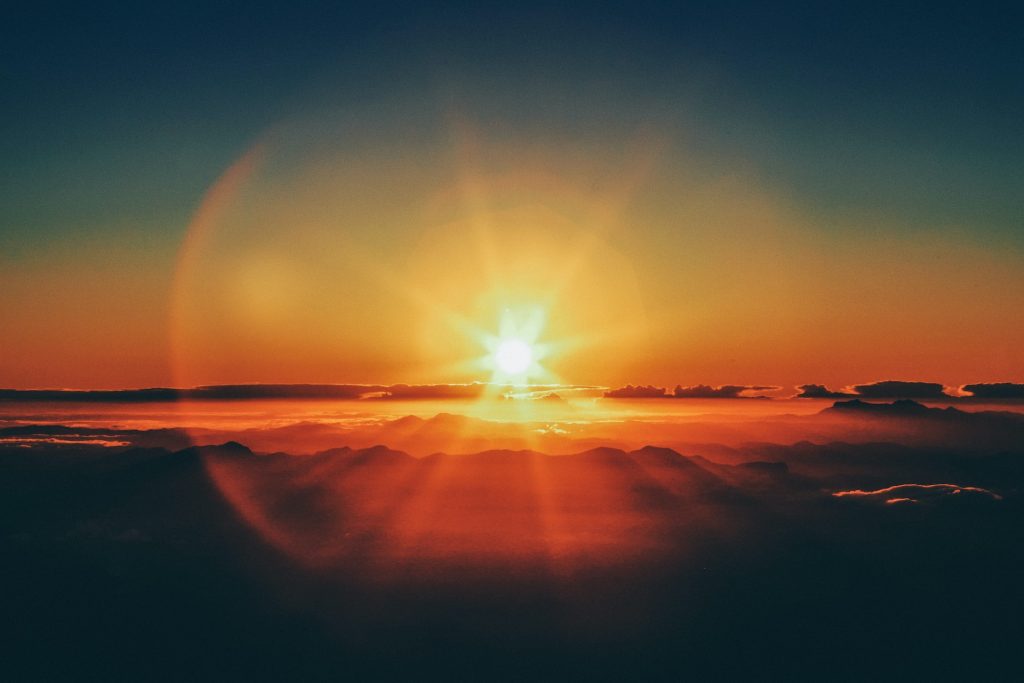What to Do About Sun-Damaged Skin

We can’t live without the sun, and if we could, it wouldn’t be fun. Our big burning buddy gives us light and warmth, and it helps us to grow food. However, every year, it gets easier and easier to get too much of it.
Sun damage can lead to skin cancer. Even if it doesn’t, it can wreak havoc on our skin. If your hobbies include hiking, outdoor athletics, or occasionally leaving the basement, you’ll want to read on to avoid looking like Charles Bukowski by age 27.
The desert is a special place for sun damage
The sun can be very damaging to our skin almost anywhere on earth, but can be especially so in the desert. Our skin needs ample moisture to stay healthy. The desert is a dry environment, and the sunshine is strong and intense throughout the year. This can cause our skin to become dry, cracked, sunburned, and even permanently sun-damaged.
What is sun damage to the skin?
Sun damage is pretty much what it sounds like. The sun’s ultraviolet (UV) rays can damage our skin, leading to wrinkles, sunspots, and even skin cancer.
The most commonly troublesome effects of sun damage are those that result in the appearance of premature aging. Dermatologists call this process “photoaging,” and if you spend a lot of time outside in the desert, it can sneak up on you before you know what’s happening.
Causes of sun damage
There are two primary causes of sun damage: ultraviolet (UV) radiation and infrared (IR) radiation from the sun. UV radiation is the main cause of sunburn, and it can also damage our DNA. IR radiation is not as harmful as UV radiation, but it can still lead to skin damage, especially with long-term exposure.
Symptoms of sun damage
The symptoms of sun damage include wrinkles, sunspots, changes in pigmentation, new freckles, blotches, broken capillaries, a rough or uneven texture, and even cracking and bleeding.
Wrinkles are caused by the breakdown of collagen. Sunspots are caused by the overproduction of melanin. Skin cancer is caused by the abnormal growth of skin cells. Even when sun damage is not severe enough to result in skin cancer, it can lead to long-term issues with skin health that can be increasingly difficult to resolve the longer they’re allowed to worsen.
How to repair sun-damaged skin
Some effects of long-term sun damage to the skin are unfortunately irreversible. The foremost of these is the alteration of DNA by exposure to the sun’s infrared radiation. Once this process has kicked in, there’s not much that can be done other than damage control.
For other sorts of sun damage, one of the most popular solutions is to use products that contain retinol, a derivative of vitamin A. Applying retinol to the skin helps increase the production of collagen and increase the pace of cell turnover, which can help offset nearly all the visible effects of sun damage. Some products aren’t ideal for sensitive skin, so it might be wise to try spot treatments or go slowly at first.
Other vitamins and creams can help too, especially beta-carotene. A balanced diet can work wonders for skin health in the long run. Eat carrots and fruit smoothies every day and see if you don’t notice a glow.
More high-investment treatments include laser therapy, chemical peels, and microdermabrasion, which uses friction to remove the skin’s outer layer and increase the production of collagen.
Prevention of sun damage
In mitigating sun damage, as is true in many sports, the best offense is a good defense. The best way to deal with sun damage is to use sunscreen, wear protective clothing, and ration your sun exposure before it happens.
Short of wearing ski masks and hazmat suits and living in a lunar colony, there’s no way to keep your skin entirely safe from the wrath of the sun. However, if you liberally apply sunblock with a high SPF (around 30 is a good place to start), avoid direct exposure during peak hours (10:00 am to 4:00 pm in most places), and cover your skin as needed.
The sun can do damage. For desert denizens, the stakes are exceptionally high. Don’t act like you don’t know.

